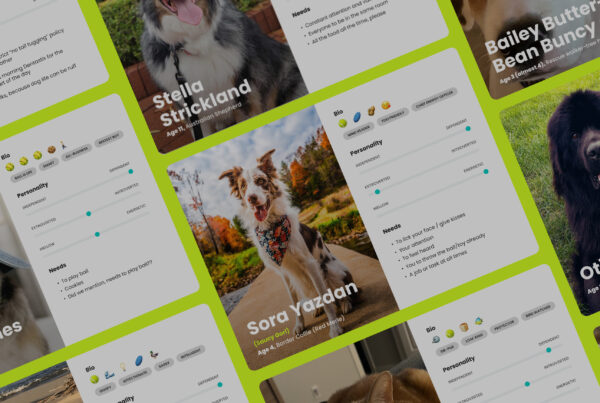Human Resources (HR) plays a pivotal role in shaping an organization’s success. Why? Because that’s where your employee journey starts. According to Forbes, organizations that focus on overall employee engagement deliver three times more revenue per employee, have 40% lower workforce turnover and 15% higher productivity.
HR service delivery, in particular, is a critical component of HR that directly impacts both employees and the overall efficiency of an organization. Done well, it can provide great advantages such as process automation, advanced employee analytics and workspace management that can help companies stay on top of things like compensation discrepancies, learning and development, and succession planning.
More than an Employee Portal: The Evolution of HR Service Delivery
HR service delivery has come a long way from its traditional roots, today the HR landscape is marked by digital transformation. Self-service employee portals that connect a multitude of backend support systems and content with artificial intelligence to create a seamless employee experience are not just the future of HR service delivery; they are happening now. According to a study done in 2022 by the Society for Human Resource Management, 1 in 4 organizations reported using automation or AI to support HR related activities. A major driver of this evolution is the need to meet the changing expectations of a diverse and dynamic workforce, especially workforces that skew younger which will be the majority of them in the not-so-distant future. According to Forbes, Millennials and GenZ already make up 38 percent of the global workforce. By 2030 that number is expected to rise to 58 percent. Millennials and GenZers are used to self-service experiences, whether accessing resources at work or shopping for the latest and greatest online.
But, worker preferences are not the only evolutionary driver. According to same study by SHRM, 85 percent of employers using automation or AI said it saves time or increases efficiency. Digital transformations that help automate HR processes are undertaken because of the need to reduce errors, get better data about employees, optimize use of HR professionals, and overall achieve a greater degree of efficiency within an organization. With benefits of digital transformation for both business and employee, it’s no wonder HR departments are leaving the filing cabinets behind them.
What An Employee-First Approach Looks Like
One of the central tenets of modern HR service delivery is an employee-first approach. This approach is all about understanding the employee journey and providing tools and services that make employees’ lives easier and more fulfilling, which in turn drives value for the whole organization and increases the likelihood of hitting company goals.

Here are some key aspects of an employee-first approach:


Benefits of an Employee-First HR Service Delivery
While putting the employee first in the HR experience certainly benefits the employees, it’s not just about them.

There are numerous benefits enterprise-wide that cannot be ignored:


Consider This Before Getting Started on Your HR Digital Transformation
As much as everyone wishes digital transformation was as easy as asking Alexa to “add bread to your grocery list,” it isn’t as simple as organizations hope. In fact, according to a Forbes assessment, the risk of failure in digital transformation can be as much as 84 percent. Research by McKinsey, BCG, KMPG and Bain & Company placed the risk of failure between 70 and 95 percent.

That said, making sure you consider some of the major pitfalls prior to starting your effort could significantly reduce your effort’s risk of failure. Here are some considerations:


Our Unique Approach to Digital HR Service Transformations
At Veracity, we take the time to understand the total experience—basically anything impacting your employee experience and your bottom line. We help you prioritize your employees across your HR service offerings by prioritizing them in all our services.

Some of our services include:


A History of Client Successes
Veracity has employed our unique approach for creating employee-first HR Service digital transformations on behalf of many clients. Every organization’s journey is unique, and digital transformation is not a one-size-fits-all effort. Some businesses look to redefine and reuse existing technology; others are hoping to invest in something new and integrate it with existing systems. For example, a global consulting and project solution client needed help assessing new technologies for their employees. Leveraging user-research and insights, Veracity delivered a comprehensive future state ecosystem and service design strategy for this company’s transformation that empowered them to meet their goals. See the full case study, here.
Employees, Not Just Processes
HR service delivery is more than a set of processes. It’s about harnessing the right technology to create a more efficient, personalized, and employee-centric HR experience. When done right, it can lead to a happier workforce, increased productivity, and a more successful organization. And in today’s world of rising workforce costs and decreased employee satisfaction, building a strong foundation for your employee experience with first-class HR Service design is a great place to start to drive value for your company.
You Might Also Like…
Unlock the full potential of your next digital transformation with our comprehensive collection of insights, analysis, and expert opinions.

A Paw-some Approach to Employee and Customer Success

I am text block. Click edit button to change this text. Lorem ipsum dolor sit amet, consectetur adipiscing elit. Ut elit tellus, luctus nec ullamcorper mattis, pulvinar dapibus leo.




